The latest newsletter from Spaceward:

Spaceward Foundation News Bulletin
Newsletter #3 – September 08, 2007
Hello Folks!6 weeks to go, and the excitement is mounting!In this newsletter:
- Announcements: EuroSpaceward, The Space Show, Hotels, Light Racers
- Venue pictures and sneak preview
- 2007 Team Profiles
- Volunteer positions
Announcements:For those of you new to this newsletter, previous letters are archived at www.spaceward.org/press.html#newsLetters, including the power-beaming technology overview from newsletter #2. This will help you keep up with some of the comments in the team preview below.Fans of Dr. David Livingstone’s Space Show as well as Space Elevator enthusiasts can find our 90 minute SE special conversation with the good doctor here. We talk about the coming games, the Space Elevator, Light Racers, and a little bit about the Space program and Space politics.
A quick reminder on behalf of the European Spaceward Foundation – Registration for the 2007 Climber Workshop in Luxemburg is open – read all about it at www.eurospaceward.org.
Team registration for Light Racers: Welcome to our new team from Farmington. If you’re considering participating in the Great Light Racer Championship, please sign up to the Light Racer mailing list, since we’ll use this list to announce special offers (Solar Panels!) rule updates, practice times, etc. Take a couple of minutes and read through the pages available at www.lightRacers.org. A new picture-by-picture guide to building a Light Racer is available too.
And finally, as if you’ve forgotten, the 2007 Spaceward Games – October 19-21 2007: Be there or be square! For details, tickets, special hotel rates, go to www.spaceward.org. A new hotel rate is now available at the Hilton Garden Inn in Layton (In addition to the Holiday Inn Express next door.) The discounted prices expire about 3 weeks before the games, or if they sell the entire block – so get your tickets now!
Venue Sneak Preview:(Since some email readers do not show images by default, I used links instead of embedded images – just click the image name to view it)I just recently returned from another scouting week in lovely Salt Lake City. Things are coming along great, and I thought I’d share some of the pictures and some of my thoughts with you.
The first image is probably familiar to you already, a Google aerial shot showing the general layout of the grounds. The signature square concrete path will be the epicenter of activity – this is where the climbers will launch from.
The second image is of the launch pad location, taken from where the crane will be located. This year’s crane has an “elbow” type boom, and so will be almost 100′ away from the ribbon, which in my mind makes for a much prettier setup. Still, at almost 400′ tall, even 100′ doesn’t seem like much…
From the launch pad, you can follow the concrete pathway through the lawn to “climber row” – the hangar where the teams are parked when they are not on the pad. Serving as a real life Space Elevator museum, climber row features the climbers hanging from the roof beams at eye level, so you’ll be able to walk up close, talk to the teams, and get a first hand look at what makes them (both the climbers and the teams) tick.
The concrete paths are great for moving the team entries around, and the square pattern allows us to de-stage one team while the other one sets up – No traffic interference. This event center seems to have been built for our games.
Right outside climber row stands this concrete pedestal, which will be transformed (by October 15) into an 8′ Earth hemisphere, complete with Space Elevator attached. This model will also feature the moon, and mars – all to scale!
There is much more that I haven’t snapped pictures of: The question Maze, the A/V facilities where we will screen unique Space Elevator movies, the Light Racer arena, the media center (more on this in the next newsletter)
I will be headed back to SLC in a couple of weeks, and will make sure to have more show and tell for the next newsletter.
The rest of this email is dedicated to an overview of our teams – both the veterans and the newcomers. I recommend that you check out their web sites… You’ll find that the teams are about as diverse a set as we could have hoped for – universities and hobbyists, 4 countries – some are prolific bloggers, some are more secretive. One thing’s for sure: On October 19, all their secrets will be revealed.So here we go, alternating between veteran and newcomers. You’ll notice that not all 22 teams are here. As was the case last year, some teams are not able to complete their climber in time. Since we’re nice people, we allow them to roll over their entry to next year, and so we hope to see them compete yet in 2008.
- USST – the University of Saskatchewan. (www.usst.ca).
USST was last year’s best performing team, having come in only two seconds too slow to claim the prize money. This year is a brand new game of course, so while they are natural favorites, they are by no means a hands-down sure bet. Last year, USST was the only team to attempt an Infra-Red power beam, and they are planning to pursue the same idea again this year – only with a much more powerful system in mind. They are ambitious, and are definitely a team to watch. Clayton Ruszkowski is the leader.
- Lasermotive (www.lasermotive.com).
This new entry from Seattle is led by Laser expert Jordin Kare, also working with an Infra-Red based system. The Infra-Red systems are closest to what is currently planned for the real Space Elevator – we explained a little bit about the power systems in the previous newsletter. Definitely one of the favorites.
- The Kansas City Space Pirates (www.kcspacepirates.com).
The Pirates were by far the most original design last year, and also one of the more powerful ones, pioneering the use of a Solar light collector and what Brian Turner termed “Helio-Beaming”. Look for another original design this year!
- E-T-C (www.earth-track-controllers.com).
ETC is our first ever Japanese team! ETC is one of the teams that have chosen to use a commercial off-the-shelf white light beam. Led by Akira Tsuchida.
- MIT (mitset.mit.edu).
The Massachusetts Institute of Technology doesn’t join competitions in order to come in second. That’s right – If you’re not first, you’re last! MIT is one of our new entries, and we’re expecting them to uphold the school’s reputation. MIT’s system is based on a Microwave beam, and they have been working on their entry for more than a year, so expect to see sparks fly!
- Team Zero G(www.teamzerog.com).
A home grown Microwave-based team, lead by Arthur Shay and assisted by daughter Katie.
- Team Tesla (www.warr.de/projekte.php?projekt=space_elevator).
Last year the German team was one of the more robust designs, so if that’s any indication, we’re looking forward to see Team Tesla’s entry. They are pursuing a MW based system, and from their web site they will certainly have this year’s best looking climber! Team leader is Joachim Sturm.
- The Technology Tycoons. (www.goingupteam.com).
Known last year as “Lite Won”, this high-school team is another one of the teams using redirected Solar light. Last year’s direct-solar climber performed quite well, and so they have the potential to pull a fast one (get it?) over the grown-up teams. Team leader is Larry Grattan.
- McGill University (space-elevator.mcgill.ca).
Another member of the Canadian invasion, McGill is also pursuing a Microwave power beam. Lead by Cyrus Foster.
- Snowstar (www.snowstar.ca).
The team from the University of British Columbia is one of our two-year veterans, having fielded entries in both the 2005 and 2006 games. They’re back this year with an all-new Solar based design. Led by Damir Hot, this team is one of the better sponsored teams in the line-up.
- Starlifters
A new team this year, featuring a solar design. Led by Donald Longerbeam.
- Centaurus Aerospace.
A private team from Logan, Utah, Centaurus is our second two-year veteran. Last year Centaurus we already attempting a Microwave based design, and so they have an extra year’s worth of MW experience under their belts.
- Andromeda Connection (www.anconn.com).
A new team this year, featuring a solar design. Led by Mike Harvey
- University of Michigan MClimber (www.mclimber.org).
A veteran group, University of Michigan’s MClimber was the first of the climbers to reach the top of the track last year. Lead by Brian Baca, this team is using a white light beam, similar to that of ETC.
Next on our agenda is the “help wanted” sectionWe’re looking for a few good men and women to act as guides – this event will draw on the larger SLC area population, and a lot of people coming to the games will never have heard about the Space Elevator before. (Gasp!) Do you know your Space Elevator basics? Can you explain them well? We’ve got a “Guide” badge waiting for you!If you feel you’re up for it, please browse to http://www.spaceward.org/help-wanted.html and register, so we can keep you informed. Please also email help-wanted@spaceward.org with a description of what you want to do at the competition.
We look forward to seeing you at the games! The Spaceward Crew
The Spaceward Foundation is a 501(c)(3) educational non-profit dedicated to furthering Space exploration in educational curriculums and the public mindshare – http://www.spaceward.org.
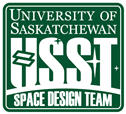 USST gets some hometown press coverage here.
USST gets some hometown press coverage here.
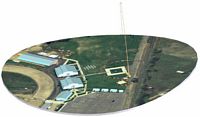

 Following in the footsteps of the Kansas City Space Pirates’ Brian Turner, who created an animated view of the upcoming Space Elevator Games Climber / Power-Beaming competition, Tom Nugent of LaserMotive has come up with his own version. He talks about it in LaserMotive’s latest blog post,
Following in the footsteps of the Kansas City Space Pirates’ Brian Turner, who created an animated view of the upcoming Space Elevator Games Climber / Power-Beaming competition, Tom Nugent of LaserMotive has come up with his own version. He talks about it in LaserMotive’s latest blog post,  Space Elevator afficianados will instantly know who both Dr. Laubscher and Eric Westling are. For those of you who don’t, let me quote a (very) abbreviated bit from their resumés as posted on the Space Show website:
Space Elevator afficianados will instantly know who both Dr. Laubscher and Eric Westling are. For those of you who don’t, let me quote a (very) abbreviated bit from their resumés as posted on the Space Show website:
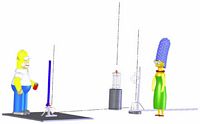
 It’s amazing – I was on vacation for about a week and got just SO far behind.
It’s amazing – I was on vacation for about a week and got just SO far behind. As many readers know, last year the Space Elevator Games were held in conjunction with the
As many readers know, last year the Space Elevator Games were held in conjunction with the  On the Space Prizes Blog, Ray
On the Space Prizes Blog, Ray  So, I’ve only had two posts this week – far below my usual output. And, as usual, I have a good excuse 🙂
So, I’ve only had two posts this week – far below my usual output. And, as usual, I have a good excuse 🙂 I received this email from Brian Turner, fearless leader of the KC Space Pirates:
I received this email from Brian Turner, fearless leader of the KC Space Pirates:

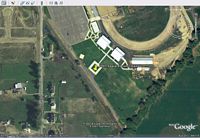
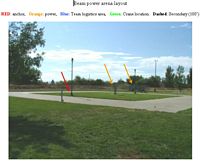
 One of the first-time entrants in this year’s
One of the first-time entrants in this year’s 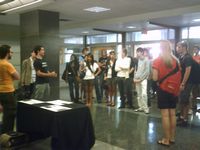
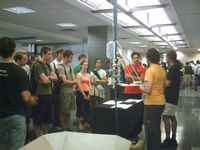

 “We can’t buy our way to victory, but a good design goes a long way.”
“We can’t buy our way to victory, but a good design goes a long way.” If you are a subscriber to the Wall Street Journal online, you can view
If you are a subscriber to the Wall Street Journal online, you can view  In order to operate their Climber/Power Beaming entries, many of the contestants in this year’s contest must have permission from the FAA.
In order to operate their Climber/Power Beaming entries, many of the contestants in this year’s contest must have permission from the FAA. That was my question when I read the
That was my question when I read the 
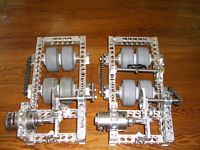
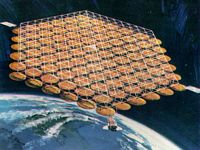 Longtime readers know that I am very interested in how Solar Power Satellites (SPS) might become a viable option for providing clean energy from space. According to the calculations
Longtime readers know that I am very interested in how Solar Power Satellites (SPS) might become a viable option for providing clean energy from space. According to the calculations  But I still try and follow developments in this field, hoping for some new breakthrough (or hoping that I’ve misplaced a decimal point somewhere). In a recent issue of Marc Boucher’s
But I still try and follow developments in this field, hoping for some new breakthrough (or hoping that I’ve misplaced a decimal point somewhere). In a recent issue of Marc Boucher’s 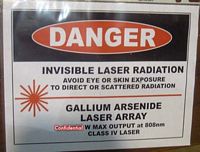 In this
In this  In this year’s
In this year’s  favor if each of the teams would bring yours truly a six-pack of their favorite brew. If you do, I promise to reimburse you in American or Canadian dollars and to post a very favorable story about your team 🙂
favor if each of the teams would bring yours truly a six-pack of their favorite brew. If you do, I promise to reimburse you in American or Canadian dollars and to post a very favorable story about your team 🙂 One of the entrants in last year’s
One of the entrants in last year’s 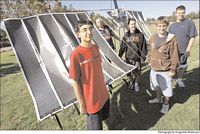
 49 years ago today, President Dwight David Eisenhower signed The National Aeronautics and Space Act (Pub.L. 85-568) to create The National Aeronautics and Space Agency, more commonly known as
49 years ago today, President Dwight David Eisenhower signed The National Aeronautics and Space Act (Pub.L. 85-568) to create The National Aeronautics and Space Agency, more commonly known as  Though this agency is often criticized, it’s monumental achievements cannot be overlooked. In addition to winning the race to the moon via its Mercury and Apollo programs, NASA has sent probes all over the solar system and into true outer space. Today, NASA’s Rovers wander the surface of Mars, looking for the building blocks of life. NASA built and launched Skylab and is now working on the International Space Station. It has launched numerous satellites that have performed
Though this agency is often criticized, it’s monumental achievements cannot be overlooked. In addition to winning the race to the moon via its Mercury and Apollo programs, NASA has sent probes all over the solar system and into true outer space. Today, NASA’s Rovers wander the surface of Mars, looking for the building blocks of life. NASA built and launched Skylab and is now working on the International Space Station. It has launched numerous satellites that have performed  spectacularly, perhaps best symbolized by the Hubble Telescope. It has built the Shuttle, the world’s only, true, spaceship; capable of launching into space (with a 20 ton payload) and returning. And for we Space Elevator afficiandos, let’s not forget that NASA provided the money for Dr. Edwards research which led to
spectacularly, perhaps best symbolized by the Hubble Telescope. It has built the Shuttle, the world’s only, true, spaceship; capable of launching into space (with a 20 ton payload) and returning. And for we Space Elevator afficiandos, let’s not forget that NASA provided the money for Dr. Edwards research which led to  the Space Elevator concept we are all working for, not to mention the prize money for the
the Space Elevator concept we are all working for, not to mention the prize money for the  There is little doubt that NASA is going through perhaps their most difficult time now. From constantly changing priorities, to personnel issues that have become soap-opera fodder, to trying to deal with the nascent commercialization of space, it sometimes seems now like they are in a lose-lose situation. But I think we have to step back and take a look at the larger picture and just marvel at what they have actually accomplished and what they continue to do.
There is little doubt that NASA is going through perhaps their most difficult time now. From constantly changing priorities, to personnel issues that have become soap-opera fodder, to trying to deal with the nascent commercialization of space, it sometimes seems now like they are in a lose-lose situation. But I think we have to step back and take a look at the larger picture and just marvel at what they have actually accomplished and what they continue to do.
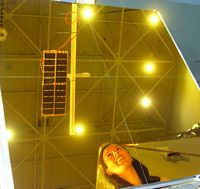
 Meekk Shelef, president of the Spaceward Foundation: “We are thrilled to have added an educational component where kids can take part in the competition. Reaching out to the scientists and engineers of the future is the most important thing we can do.”
Meekk Shelef, president of the Spaceward Foundation: “We are thrilled to have added an educational component where kids can take part in the competition. Reaching out to the scientists and engineers of the future is the most important thing we can do.”